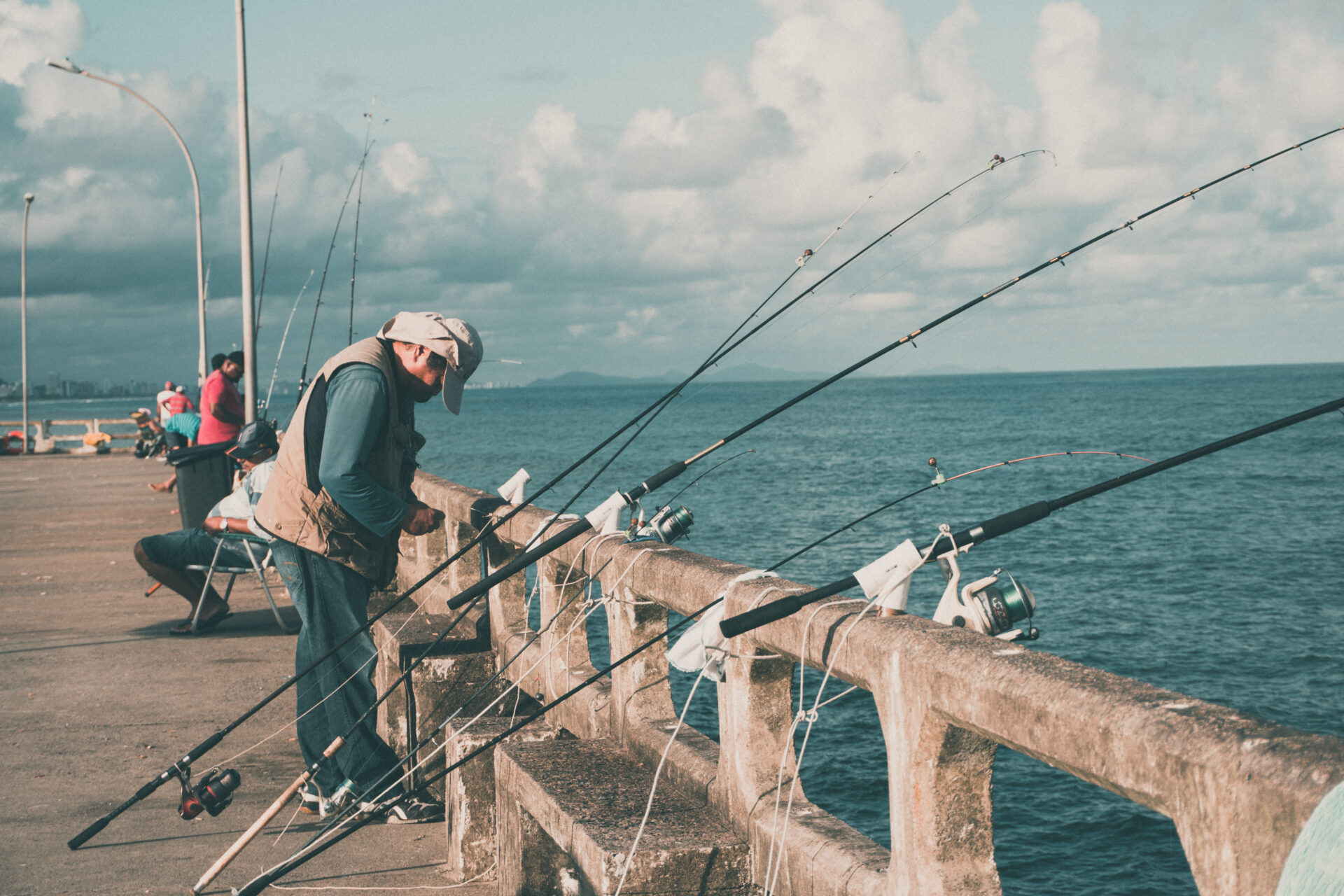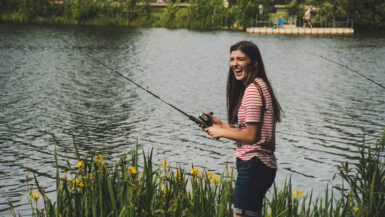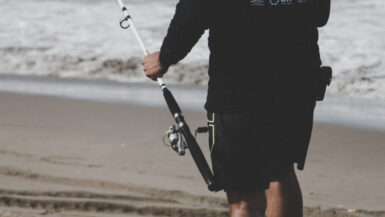If you’re looking to reel in some catfish while on the lake, you need to know the best baits to use. Fortunately, there are a few great options out there that will help you hook plenty of catfish in no time. In this article, we’ll discuss the best baits to use when fishing for catfish in lakes, what types of catfish they work best for, and some other tips to make the most of your fishing experience. Read on to find out all the secrets to making your next catfish catching trip a success.
Types of Catfish in Lakes
Catfish are one of the most popular species of fish to catch in lakes. Knowing the different types of catfish, as well as their preferred habitats can go a long way in helping you find the best baits for catching catfish in lakes. Catfish vary in size, shape, and color. While some can be found in deep, open water, others prefer slow-moving streams or backwaters.
Types of Catfish in Lakes
Catfish can be divided into three main categories: bullheads, channel cats, and flatheads. Each of these three catfish species have their own distinct characteristics and can be found throughout the United States.
Bullhead Catfish
Bullheads are native to the Great Lakes and can be found throughout the eastern United States. The most common variety of Bullhead is the black bullhead, and they can reach a size of up to 18 inches in length. Bullheads are generally found in slow-moving streams, ponds, and lakes.
Channel Catfish
Channel catfish are the most popular variety of catfish and can be found throughout the United States. This species can grow up to 38 inches long and can weigh up to 52 pounds. They are often found in deep open water, but can also be found in shallow, murky areas.
Flathead Catfish
Flathead catfish are native to the Mississippi River basin and can be found throughout the central United States. They can reach lengths of up to 50 inches and weights of up to 80 pounds. Flathead catfish are usually found in deep, slow-moving waters and around structures such as logs, rocks, and dams.
The Best Baits for Catching Catfish in Lakes
Once you have identified the type of catfish you are targeting, you can select the best bait for catching them. Live baits such as worms, minnows, and leeches are generally the most effective for catching catfish. Crayfish and cut bait are also known to be effective. For larger catfish, larger baits such as shad and perch can be used. Artificial baits such as jigs and crankbaits can also be used to catch catfish. Experiment with different baits to determine which one works best for the type of catfish you are targeting.
Popular Catfish Baits
Live bait is one of the most popular and effective baits for catching catfish in lakes. Worms, crickets, and nightcrawlers are all excellent choices and can be found in most tackle shops. Other live baits such as frogs, leeches, and minnows are also great choices, but they require a little more effort to procure. The key to successful fishing with live bait is to make sure it’s fresh and attractive to the catfish.
Canned Bait
Canned catfish bait is a great option for anglers who want to save time on bait acquisition. These baits come in a variety of flavors and are readily available in tackle stores and grocery stores. Popular flavors include garlic and cheese, raspberry, and liver. Canned bait is especially useful for fishing in deeper water, where live bait struggles to stay in the strike zone.
Prepared Catfish Bait
Prepared baits are becoming increasingly popular with catfish anglers. These are usually dough baits that are scented and flavored with catfish attractants. Prepared baits usually come in tubs, jars, or cans, and they are designed to stay on the hook much better than other bait types. Prepared baits are especially useful when fishing around weeds, as they are much less likely to be pulled off.
Dip Bait
Dip bait is another great option for catfish anglers who prefer not to use live or canned bait. This type of bait is usually sold in a jar or tub, and it is made from a mixture of fishmeal, oils, and other attractants. It can be used in a variety of ways, including on a hook, in a dip tube, or simply created into a ball and thrown into an area where catfish are likely to be. Dip bait is especially effective when fishing in murky water.
Artificial Catfish Bait
Artificial catfish baits are becoming increasingly popular with anglers. These lures are designed to mimic the look, smell, and taste of live bait and can be very effective when used in the right situation. Artificial baits come in a variety of shapes, sizes, and colors and can be used to target catfish in deeper water. They are also a great option for anglers who are looking to reduce their dependence on live bait.
Baits for Different Times of Day
Catfish are an exciting species to target in lakes, but anglers need to know the best baits to use in order to be successful. Different baits work better during different times of day, so choosing the right one can make all the difference. In this article, we will provide insight into the best baits for catching catfish in lakes, focusing on baits for different times of day.
Live Baits at Dawn
When it comes to dawn, live bait is the way to go. Catfish are most likely to be caught when using live bait at the crack of dawn, such as worms, minnows, or crayfish. Live bait is a great choice since the movements of the bait can draw in the catfish better than other baits.
The Benefits of Cut Bait
Cut bait is especially effective during the early morning hours when the sun is just beginning to rise. Cut bait is the best option here because the scent of the bait will easily attract the catfish. Plus, cut bait will stay on the lakebed better than live bait and is less likely to be snatched away by other species. A few great options for cut bait include shad, sunfish, and bullheads.
High Noon Bait
When the sun is at its highest, it is time to switch to a compact bait that can be easily scented. Cheese and hotdogs are two great options here as they can release an aroma that catfish will not be able to resist. Rigging the hotdog onto a hook is relatively simple and the cheese can be placed directly onto the hook.
A Late Afternoon Bait
As the afternoon approaches, anglers should switch to a more durable bait. Baitfish, such as herring, is a great option here as it will stay on the hook for a long time and will be difficult for the catfish to resist. Herring also has a strong scent that will draw in the catfish from afar.
Evening’s Finest Bait
When night falls, anglers should switch to a manufactured bait that has a strong scent and is not easily affected by the changing waters. Dough bait, such as prepared doughballs, is a great option here as they are durable and can also release an intense aroma that will be hard for the catfish to resist.
As anglers can see, different baits work best at different times of the day when it comes to catching catfish in lakes. Knowing what baits to use at different times of the day is key to being successful at catching catfish. We hope this article has provided anglers with a better understanding of the best baits for catching catfish in lakes.
Choosing the Best Bait for Your Tackle
When fishing for catfish in a lake, it is important to choose the right bait. The type of bait you choose will depend on the type of fish you’re looking to catch and the environment you’ll be fishing in. The key is to pick a bait that will attract catfish and keep them interested in biting. Here are some of the best baits for catching catfish in lakes.
Live Bait
Live bait is one of the most popular baits for catching catfish in lakes. Live bait is usually small fish such as minnows or even crayfish, but can also include worms, leeches, grubs, and maggots. Live bait is a great choice because it is natural and will attract the attention of the catfish.
Shrimp and Prawns
Shrimp and prawns are also good options for catching catfish in a lake. The scent of shrimp and prawns is very attractive to fish, making them an effective bait for catching catfish. Shrimp and prawns are also easy to find and can be bought from most tackle shops.
Chicken Wings and Necks
Chicken wings and necks are also great baits for catching catfish in lakes. The smell of the chicken is attractive to catfish and the meat is easy for them to bite onto. Chicken wings and necks are also affordable and easy to find.
Cheese and Processed Meats
Cheese and processed meats are also popular baits for catfish in lakes. The smell and taste of these foods will attract the attention of catfish and encourage them to bite. Cheese and processed meats can be found at most stores, making them an affordable and easy-to-find bait.
Using the Right Tackle
When fishing for catfish in a lake, it is important to use the right tackle. The type of tackle you choose will depend on the size of the fish you’re targeting, the environment you’ll be fishing in, and the type of bait you are using. Fishing with the right tackle will help you achieve the best results when fishing for catfish.
In conclusion, it is important to choose the right bait when fishing for catfish in a lake. Live bait, shrimp and prawns, chicken wings and necks, cheese and processed meats are some of the best baits for catfish in lakes. It is also important to use the right tackle when fishing for catfish. Ultimately, the best bait and tackle combination will depend on the type of fish you’re looking to catch and the environment. With the right bait and tackle, catching catfish in a lake can be a successful and enjoyable experience.
Best Techniques for Catching Catfish
When looking for the best baits to catch catfish in lakes, it’s important to first understand the different types of bait that can be used. Common types of bait used for catfish include minnows, shrimp, cut bait, worms, crayfish, and more. Depending on the type of catfish you’re after, you’ll want to use the appropriate bait to have the best chance of success.
Using Live Bait For Maximum Success
Live bait is often the most successful method for catching catfish. Minnows, worms, and crayfish are some of the best live baits to use. It’s important to keep fresh bait on hand as catfish are attracted to the smell and movement of live bait. If you don’t have access to live bait, cut bait can be an effective alternative.
Choosing the Right Size, Color and Shape of Bait
The size, color, and shape of your bait can play a major role in success when fishing for catfish. Smaller bait works best for smaller catfish, whereas larger bait is better for larger fish. Be sure to choose a bait that matches the size and color of the type of catfish you’re trying to catch. As for the shape, having bait that is easy for the fish to swallow is key.
Knowing When to Fish for Catfish
Knowing when to fish for catfish is also important when trying to catch them in lakes. Catfish are most active in the evening and night, so if you’re planning to fish for catfish, it’s best to do so during these times. In addition, catfish prefer water temperatures that are between 75 and 85 degrees Fahrenheit, so it’s important to fish during the warmer months when the water temperature is ideal.
Location Tips For Catfish Fishing
Finally, it’s important to know where to fish for catfish in order to maximize your success. Catfish prefer areas with lots of cover, such as sunken logs, weed beds, and rocks, as this is where they hide during the day. When looking for catfish, it’s also important to look for deeper water and areas with slow moving currents. These factors, combined with the right bait, can lead to a successful trip.
Monitoring Changes in Fishing Conditions
Fishing conditions in lakes can change dramatically, so in order to be successful in catching catfish, anglers need to be able to adjust their approach accordingly. There are several factors to consider, such as water temperature, the time of year, and the presence of other species in the lake. By monitoring these changes, anglers can have a greater chance at catching catfish.
Determining Water Temperature
Water temperature is an important factor in determining the success of catfish fishing. Catfish are cold-blooded fish, so their activity and feeding habits can be heavily influenced by water temperature. During periods of warmer water temperatures, catfish tend to be more active, making them easier to find. On the other hand, during colder temperatures, catfish will become more sluggish and may become more difficult to catch.
Choosing the Right Time of Year
The time of year is also a factor that can affect fishing conditions. During certain seasons, such as spring and summer, catfish are more active and easier to catch. During the fall and winter, however, catfish become more inactive and may be less likely to bite. As such, it is important to be aware of the seasonal changes in fishing conditions in order to adjust your approach accordingly.
Avoiding Overcrowding
Another factor to consider when fishing for catfish in a lake is the presence of other species. Lakes that have been heavily stocked with other species of fish can make it more difficult to locate catfish. Overcrowding can lead to competition for food and shelter, which can make it harder to locate catfish. To increase your chances of success, it is important to be aware of the presence of other species and avoid overcrowding.
Using the Right Bait
Once the fishing conditions have been determined and any necessary adjustments have been made, the last step is to choose the appropriate bait. Catfish respond to various types of bait, including live bait, prepared baits, and natural baits. Live baits, such as earthworms and minnows, are usually the most effective, as they provide a natural scent that attracts catfish. Prepared baits, such as dough balls and shrimp, can also be effective, as they can also offer a strong scent. Natural baits, such as crickets, can also be effective, as they can provide a more natural scent than other baits.
By monitoring changes in fishing conditions, anglers can have a greater chance of success when fishing for catfish in a lake. By being aware of water temperature, seasonal changes, overcrowding, and the types of bait that work best, anglers can increase their chances of catching catfish.
Successful Catfishing Tips
Catfishing is a popular activity that can be enjoyed by anglers of all skill levels. There are a few different types of baits that work best for catching catfish in lakes. Live bait such as worms, night crawlers, and small minnows are effective because they mimic the movements of the catfish’s natural prey. Canned baits like shrimp and cut-up pieces of fish also work well for attracting catfish. For an even bigger bait, many anglers use chicken liver or chunks of hotdog. As a general rule of thumb, you should use the smallest bait possible that will still be attractive to the catfish. When you find the right bait, you’ll be able to enjoy a successful and rewarding fishing experience.





Leave a reply